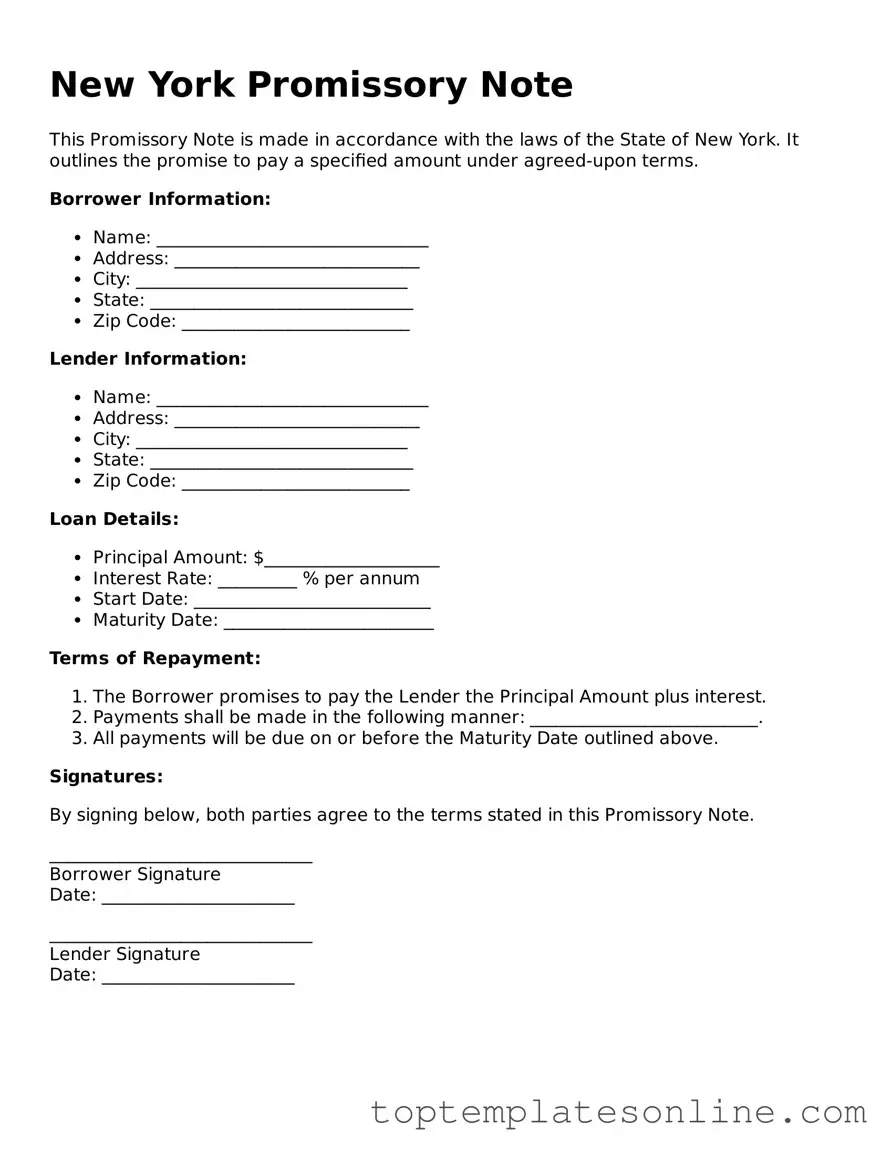The New York Promissory Note form serves as a vital instrument in the realm of personal and business finance, facilitating the clear documentation of a borrower's promise to repay a specified sum to a lender. This legally binding agreement outlines essential details, including the principal amount borrowed, the interest rate applicable, and the repayment schedule. Additionally, it may incorporate terms regarding late fees, prepayment options, and default consequences, ensuring that both parties understand their rights and obligations. The form can be tailored to suit various financial arrangements, whether for a personal loan between friends or a more formal business transaction. By providing clarity and structure, the New York Promissory Note not only protects the interests of the lender but also offers the borrower a transparent framework for managing their debt. Understanding the components and implications of this document is crucial for anyone engaging in financial agreements within the state, as it lays the groundwork for trust and accountability in lending relationships.
